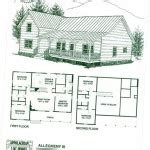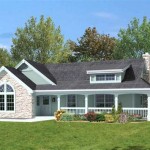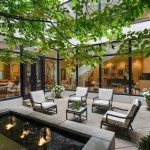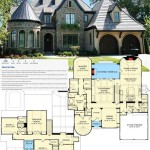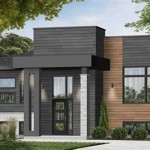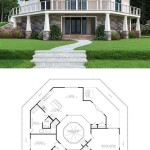Coastal cottage house plans are architectural blueprints specifically designed for constructing homes in coastal regions. These plans incorporate design elements and features that cater to the unique characteristics of coastal environments, such as proximity to the ocean, exposure to salt air, and often hurricane-prone conditions. Coastal cottage house plans are highly sought after by individuals looking to build homes that embody the charm and tranquility of coastal living.
One of the key features of coastal cottage house plans is their use of durable materials that can withstand the harsh coastal environment. These materials may include weather-resistant siding, impact-resistant windows and doors, and corrosion-resistant hardware. Coastal cottage house plans also often incorporate design elements that promote natural ventilation and passive solar heating, taking advantage of the ocean breezes and sunlight that are characteristic of coastal areas.
In the following sections, we will explore the different types of coastal cottage house plans available, as well as provide tips for choosing the right plan for your specific needs. We will also discuss the benefits of building a coastal cottage home, and provide resources for finding and working with architects and builders who specialize in this type of construction.
Here are 10 important points about coastal cottage house plans:
- Durable materials
- Energy efficiency
- Natural ventilation
- Passive solar heating
- Open floor plans
- Large windows
- Outdoor living spaces
- Coastal charm
- Hurricane resistance
- Flood resilience
These plans are designed to create homes that are both beautiful and functional, and that can withstand the unique challenges of coastal living.
Durable materials
Coastal cottage house plans prioritize the use of durable materials that can withstand the harsh coastal environment. These materials are designed to resist moisture, salt corrosion, and high winds, ensuring the longevity and resilience of the home.
- Weather-resistant siding
Fiber cement, vinyl, and metal siding options provide excellent resistance to moisture, fading, and impact, making them ideal choices for coastal homes. These materials can withstand the damaging effects of salt spray, rain, and UV rays, maintaining their appearance and structural integrity over time.
- Impact-resistant windows and doors
Windows and doors are particularly vulnerable to damage from wind-borne debris and storm surges. Coastal cottage house plans specify impact-resistant windows and doors that are designed to withstand high-velocity impacts. These windows and doors are made with laminated glass or polycarbonate glazing, which helps to prevent shattering and provides additional protection against hurricanes and other severe weather events.
- Corrosion-resistant hardware
Coastal homes are exposed to high levels of salt air, which can quickly corrode metal hardware. Coastal cottage house plans specify corrosion-resistant hardware, such as stainless steel or aluminum, to ensure that door handles, hinges, and other hardware components remain functional and aesthetically pleasing for years to come.
- Treated lumber
Wood framing and structural components in coastal homes are susceptible to rot and decay due to moisture and salt exposure. Coastal cottage house plans specify the use of pressure-treated lumber, which is infused with preservatives to resist moisture, insects, and fungal decay. This ensures the structural integrity and longevity of the home.
By incorporating durable materials into the design, coastal cottage house plans create homes that are built to last in the demanding coastal environment.
Energy efficiency
Coastal cottage house plans prioritize energy efficiency to reduce energy consumption and create a more comfortable and sustainable living environment. Thoughtful design and the incorporation of energy-efficient features help to minimize energy usage and lower utility bills.
Passive solar design
Passive solar design principles are employed in coastal cottage house plans to maximize the use of natural sunlight for heating and lighting the home. This is achieved through proper orientation of the home on the building site, placement of windows and doors to capture sunlight, and the use of thermal mass materials to store and release heat.
Energy-efficient appliances and fixtures
Coastal cottage house plans specify energy-efficient appliances and fixtures, such as ENERGY STAR-rated refrigerators, dishwashers, washing machines, and lighting fixtures. These appliances and fixtures consume less energy, reducing the overall energy footprint of the home.
Efficient HVAC systems
Heating, ventilation, and air conditioning (HVAC) systems account for a significant portion of energy consumption in coastal homes. Coastal cottage house plans incorporate high-efficiency HVAC systems, such as heat pumps and geothermal systems, which provide efficient heating and cooling while minimizing energy usage.
Insulation and air sealing
Proper insulation and air sealing are crucial for energy efficiency in coastal homes. Coastal cottage house plans specify sufficient insulation in the walls, roof, and foundation to minimize heat loss and gain. Air sealing measures, such as caulking and weatherstripping, are also employed to prevent air leakage and drafts.
By incorporating these energy-efficient features, coastal cottage house plans create homes that are more comfortable, sustainable, and cost-effective to operate.
Natural ventilation
Coastal cottage house plans prioritize natural ventilation to create a comfortable and healthy indoor environment. Natural ventilation allows for the circulation of fresh air throughout the home, reducing moisture, eliminating odors, and improving air quality. This is particularly important in coastal regions, where high humidity and salt air can contribute to indoor air quality issues.
Cross-ventilation
Cross-ventilation is a design strategy that involves placing windows and doors on opposite sides of a room or the house to create a cross-breeze. This allows fresh air to enter the home from one side and exit from the other, effectively ventilating the space. Coastal cottage house plans incorporate cross-ventilation by placing windows and doors in strategic locations to maximize airflow.
Operable windows and doors
Coastal cottage house plans specify operable windows and doors that allow for manual control of ventilation. This includes casement windows, awning windows, and sliding doors, which can be opened and closed to regulate airflow. Operable windows and doors provide flexibility and allow homeowners to adjust ventilation based on the weather conditions and their personal preferences.
Passive ventilation systems
Passive ventilation systems, such as wind towers and solar chimneys, can be incorporated into coastal cottage house plans to enhance natural ventilation. Wind towers use the natural force of the wind to draw fresh air into the home, while solar chimneys use the sun’s heat to create a thermal updraft that draws air out of the home. These passive systems provide continuous ventilation without the use of electricity.
Clerestory windows
Clerestory windows are high-placed windows that allow for ventilation and natural light in the upper portion of a room. Coastal cottage house plans may incorporate clerestory windows to release hot air and moisture that accumulates near the ceiling. This helps to create a more comfortable indoor environment, especially during warm and humid months.
Passive solar heating
Passive solar heating is a design strategy that uses the sun’s natural heat to warm a home, reducing the need for conventional heating systems. Coastal cottage house plans often incorporate passive solar heating features to take advantage of the abundant sunshine in coastal regions.
- South-facing orientation
Coastal cottage house plans are typically oriented to face south, which allows for maximum exposure to the sun’s rays during the winter months. This orientation enables the home to absorb solar heat through windows and other openings on the south side.
- Large windows and glazed areas
Coastal cottage house plans often feature large windows and glazed areas on the south side of the home to capture solar heat. These windows are strategically placed to allow sunlight to penetrate deep into the home, warming the interior spaces.
- Thermal mass
Thermal mass refers to materials that have the ability to absorb and store heat. Coastal cottage house plans incorporate thermal mass materials, such as concrete, stone, and brick, into the design of the home. These materials absorb heat from the sun during the day and release it slowly at night, providing a more stable and comfortable indoor temperature.
- Insulation and air sealing
Proper insulation and air sealing are crucial for maximizing the effectiveness of passive solar heating. Coastal cottage house plans specify sufficient insulation in the walls, roof, and foundation to minimize heat loss. Air sealing measures, such as caulking and weatherstripping, are also employed to prevent air leakage and drafts, ensuring that the heat captured by the sun is retained within the home.
By incorporating these passive solar heating features, coastal cottage house plans create homes that are more comfortable, energy-efficient, and sustainable.
Open floor plans
Coastal cottage house plans often incorporate open floor plans to create a spacious and inviting living environment. Open floor plans eliminate walls and other barriers between different functional areas of the home, such as the living room, dining room, and kitchen, resulting in a more cohesive and connected space.
- Spaciousness and natural light
Open floor plans create a sense of spaciousness and allow for the natural flow of light throughout the home. By removing walls and partitions, these plans maximize the use of available space and create a more airy and inviting atmosphere.
- Improved functionality
Open floor plans enhance the functionality of a home by providing greater flexibility in furniture placement and allowing multiple activities to take place simultaneously. This is particularly beneficial for families and individuals who enjoy entertaining guests or simply spending time together in shared spaces.
- Enhanced communication and interaction
Open floor plans promote communication and interaction among family members and guests. The absence of walls and barriers facilitates easy movement and conversation between different areas of the home, creating a more social and interactive living environment.
- Seamless transitions between indoor and outdoor spaces
Coastal cottage house plans often incorporate open floor plans that seamlessly connect indoor and outdoor living spaces. By blurring the boundaries between the interior and exterior, these plans create a cohesive living environment that takes advantage of the coastal surroundings and promotes outdoor living.
Open floor plans are a defining characteristic of coastal cottage house plans, creating a spacious, functional, and inviting living environment that is perfect for enjoying the coastal lifestyle.
Large windows
Coastal cottage house plans are characterized by the use of large windows that provide expansive views of the surrounding coastal environment. These windows not only enhance the aesthetic appeal of the home but also serve several important functional purposes.
Natural light and ventilation
Large windows allow for ample natural light to enter the home, creating a bright and airy living space. The natural light reduces the need for artificial lighting, saving energy and creating a more inviting and comfortable atmosphere. Additionally, large windows facilitate natural ventilation by allowing fresh air to circulate throughout the home, reducing moisture and improving indoor air quality.
Connection to the outdoors
Large windows create a strong connection between the interior and exterior of the home, bringing the beauty of the coastal surroundings into the living space. Whether it’s the tranquil views of the ocean, the lush greenery of the landscape, or the vibrant activity of a coastal town, large windows provide a constant reminder of the home’s unique location and allow occupants to enjoy the benefits of coastal living.
Enhanced views and aesthetics
Strategically placed large windows can frame stunning views of the coastal landscape, creating a picturesque backdrop for everyday living. The windows themselves become architectural features, enhancing the overall aesthetic appeal of the home and contributing to its unique character and charm.
Outdoor living spaces
Coastal cottage house plans often incorporate spacious and inviting outdoor living spaces that seamlessly connect the interior of the home to the surrounding coastal environment. These outdoor spaces are designed to maximize the enjoyment of the coastal lifestyle, providing areas for relaxation, dining, and entertainment while offering stunning views of the coastal surroundings.
- Decks and patios
Decks and patios are common outdoor living spaces in coastal cottage house plans. These elevated or ground-level platforms extend the living area outdoors, creating a perfect spot for relaxing, dining, or entertaining guests. Decks and patios are often constructed using durable materials such as treated lumber or composite decking, ensuring longevity in the coastal environment.
- Screened porches and sunrooms
Screened porches and sunrooms provide a protected and comfortable outdoor living space, allowing occupants to enjoy the outdoors without being exposed to insects, direct sunlight, or inclement weather. These spaces are often furnished with comfortable seating and dining areas, creating an extension of the indoor living space while still maintaining a connection to the outdoors.
- Outdoor kitchens and grilling areas
Outdoor kitchens and grilling areas are a popular feature in coastal cottage house plans, catering to the coastal lifestyle of outdoor cooking and entertaining. These spaces are typically equipped with built-in grills, sinks, and counter space, allowing for convenient and enjoyable outdoor dining experiences.
- Fire pits and fireplaces
Fire pits and fireplaces are a cozy and inviting addition to outdoor living spaces in coastal cottage house plans. These features provide warmth and ambiance, extending the use of outdoor spaces into the cooler evenings and creating a perfect spot for gathering, storytelling, and roasting marshmallows.
Outdoor living spaces are an essential element of coastal cottage house plans, providing a seamless connection between the interior and exterior of the home while maximizing the enjoyment of the coastal surroundings.
Coastal charm
Coastal cottage house plans embody the charm and character of coastal living, capturing the essence of the seaside in their architectural design and aesthetic features. These plans incorporate elements that evoke the relaxed and inviting atmosphere of coastal communities, creating homes that are both stylish and welcoming.
- Natural materials and textures
Coastal cottage house plans often incorporate natural materials and textures to create a warm and inviting atmosphere. Wood, stone, and brick are commonly used, along with natural fabrics such as cotton and linen. These materials bring a sense of the outdoors in, creating a connection to the coastal environment.
- Soft, muted colors
Coastal cottage house plans typically use soft, muted colors that reflect the coastal landscape. Whites, creams, and beiges are popular choices, as they create a sense of openness and airiness. These colors are often complemented by accent colors inspired by the sea, such as blues, greens, and yellows.
- Coastal-themed decor
Coastal cottage house plans often incorporate coastal-themed decor to enhance the seaside ambiance. This may include decorative elements such as seashells, driftwood, and nautical motifs. Coastal artwork, such as paintings or photographs of seascapes, can also be used to create a sense of place and connection to the coastal environment.
- Outdoor living spaces
Outdoor living spaces are an essential element of coastal cottage house plans. Decks, patios, and porches extend the living area outdoors, providing spaces for relaxation, dining, and entertainment. These outdoor spaces are often designed to take advantage of coastal views and create a seamless connection between the interior and exterior of the home.
The combination of these elements creates a unique and charming coastal aesthetic that is both inviting and stylish. Coastal cottage house plans capture the essence of the coastal lifestyle, providing homes that are perfect for creating lasting memories and enjoying the beauty of the seaside.
Hurricane resistance
Coastal cottage house plans prioritize hurricane resistance to ensure the safety and integrity of the home during severe storms. These plans incorporate structural features and design elements that are designed to withstand the high winds, heavy rains, and potential flooding associated with hurricanes.
- Reinforced foundation
Coastal cottage house plans specify reinforced foundations that are designed to withstand the uplift forces generated by high winds. These foundations may include concrete piers, pilings, or a combination of both, providing a solid and stable base for the home.
- Wind-rated windows and doors
Windows and doors are particularly vulnerable to damage from hurricane-force winds. Coastal cottage house plans specify wind-rated windows and doors that are designed to resist high wind pressures and flying debris. These windows and doors are typically made with impact-resistant glass and reinforced frames, providing additional protection against breakage and wind-borne projectiles.
- Metal roof
Metal roofs are a popular choice for coastal cottage house plans due to their durability and hurricane resistance. Metal roofs are lightweight, non-combustible, and resistant to wind damage. They are also designed to shed water efficiently, reducing the risk of leaks during heavy rains.
- Storm shutters
Storm shutters are an important hurricane protection feature for coastal cottage house plans. These shutters are installed over windows and doors to provide additional protection against wind-borne debris and wind pressure. Storm shutters can be made from a variety of materials, including aluminum, steel, or wood, and are designed to withstand the impact of flying objects and high winds.
By incorporating these hurricane-resistant features, coastal cottage house plans create homes that are better equipped to withstand the challenges of hurricanes and other severe weather events, providing peace of mind and protection for homeowners and their families.
Flood resilience
Coastal cottage house plans prioritize flood resilience to minimize the risk of damage and ensure the safety of occupants in the event of flooding. These plans incorporate design features and construction techniques that help to protect the home from floodwaters and mitigate their potential impact.
Elevated foundation
Elevating the foundation of a coastal cottage is a key flood resilience strategy. This involves raising the home above the anticipated flood level, providing a buffer between the floodwaters and the living spaces. Elevated foundations can be achieved using various methods, such as concrete piers, pilings, or a combination of both. By elevating the home, the risk of floodwater entering the living spaces is significantly reduced.
Flood vents
Flood vents are designed to allow floodwaters to enter and exit a home in a controlled manner, reducing the hydrostatic pressure on the foundation and walls. These vents are typically installed in the foundation walls and are equipped with flappers or other mechanisms that open when the water level rises. By allowing floodwaters to enter and exit the home, flood vents help to prevent structural damage and minimize the risk of collapse.
Water-resistant materials
Coastal cottage house plans specify the use of water-resistant materials in areas that are prone to flooding. These materials include moisture-resistant drywall, waterproof flooring, and mold-resistant insulation. By using water-resistant materials, the damage caused by floodwaters is minimized, and the home is less likely to develop mold and other moisture-related issues.
Flood insurance
In addition to incorporating flood resilience features into the design and construction of the home, coastal cottage house plans also emphasize the importance of flood insurance. Flood insurance provides financial protection in the event of a flood, covering the costs of repairs and replacement of damaged property.










Related Posts

